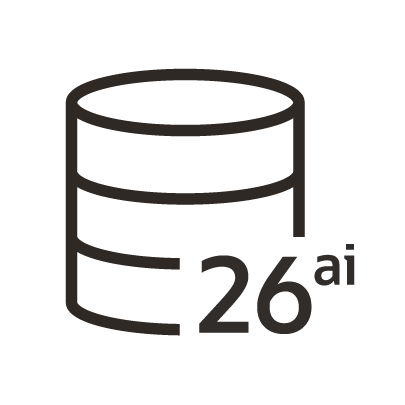
SQL Daily
@sqldaily
Daily Oracle SQL tips from the Oracle Developer Advocates for SQL
你可能會喜歡
Want to learn a new skill in 2024? Make it #SQL! Oracle Dev Gym has a series of FREE classes to help you do this Start with Databases for Developers: Foundations Join at devgym.oracle.com/pls/apex/dg/cl…

Aggregate functions in #SQL report totals across many rows Common ones are COUNT, SUM, AVG, MAX, MIN Baraa Khatib Salkini explains how these work and how to use them to answer questions like How many orders are there? What's their total sales value? youtube.com/watch?v=AsuPVZ…

youtube.com
YouTube
SQL Aggregate Functions | COUNT, SUM, AVG, MAX, MIN | #SQL Course 21
AI agents can help you build schemas and create test data Chris Hoina shares an example prompt to store data about cars, trucks, motorcycles and their manufacturers Then shows you how to use it with SQLcl MCP Server and Cline to make the tables blogs.oracle.com/database/promp…
The wait is (nearly) over! Oracle AI Database 26ai EE for Linux x86-64 will be released on premises in the next RU (23.26.1), due January 2026 Read full details at blogs.oracle.com/database/oracl…
Mouhamadou Diaw examines the differences between functions & procedures in PL/SQL Functions Return a value Can be called in #SQL - DML must be in an autonomous transaction Procedures Use OUT parameters to return values Can't be called in SQL directly mouhamadoudiaw.wordpress.com/2025/11/15/ove…
Tracking changes to values over time is a common requirement For example, recording price fluctuations for goods Alexey Makhotkin steps through designing tables to store these changes, proposing template tables with Anchor Value Valid from/to dates kb.databasedesignbook.com/posts/historiz…
Change the partitioning method for an Oracle table with: ALTER TABLE ... MODIFY PARTITION BY ... This can change The partition method (RANGE/LIST/HASH) The partition columns Add/remove subpartitioning Add the ONLINE clause to allow writes to continue while changing
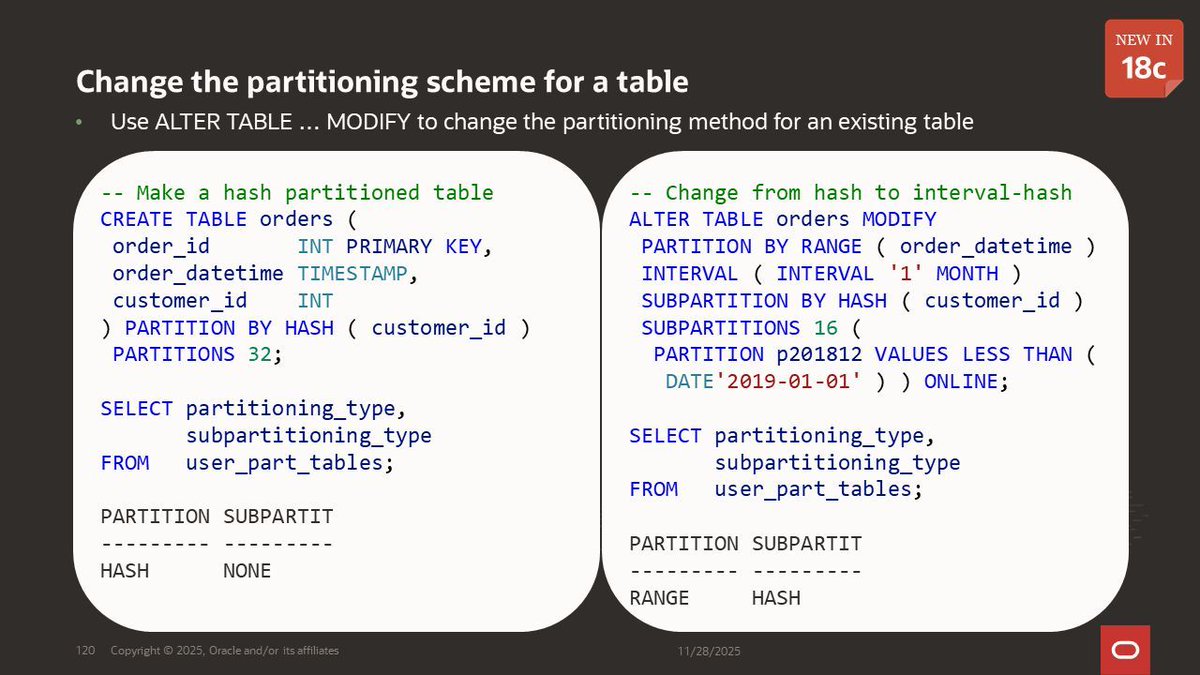
Like #SQL? Like puzzles? Try #SQuizL A free, daily guess-the-SQL statement quiz You have up to six attempts to complete the statement on the top left using the fragments below There's a new statement to guess at every day at midnight UTC Play now at devgym.oracle.com/pls/apex/f?p=1…
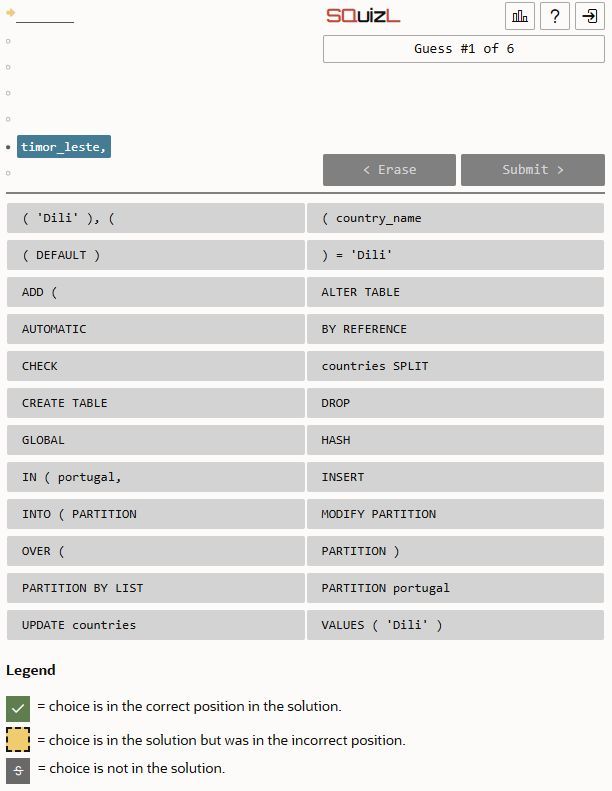
You can run in-database AI inference on Oracle Active Data Guard @ludodba shows you how to do this to find images with semantic search Loading an ONNX model & pictures Creating PL/SQL to generate embeddings Running this proc and searches on the standby blogs.oracle.com/maa/onnx-on-ac…
When tuning #SQL, focus on the estimates for how many rows each operation will return If these are off by an order of magnitude or more, there's a good chance a different plan is faster @TanelPoder has built scripts to show misestimates in Oracle plans tanelpoder.com/posts/xb-sql-s…
Oracle AI Database 23.26.0 developer features include QUALIFY clause GraphQL Table Function for SQL SQL Objects and Collections in MLE JavaScript PL/SQL RESETTABLE clause to avoid ORA-04068: existing state of packages has been discarded @GeraldVenzl geraldonit.com/whats-new-for-…
Define schema-only accounts in Oracle AI Database with CREATE USER ... NO AUTHENTICATION => you can't connect as this user To run scripts as-if you're a schema-only account, use a proxy user ALTER USER schema_only GRANT CONNECT THROUGH proxy CONN proxy[schema_only]/<pwd>
![sqldaily's tweet image. Define schema-only accounts in Oracle AI Database with
CREATE USER ... NO AUTHENTICATION
=&gt; you can't connect as this user
To run scripts as-if you're a schema-only account, use a proxy user
ALTER USER schema_only GRANT CONNECT THROUGH proxy
CONN proxy[schema_only]/&lt;pwd&gt;](https://pbs.twimg.com/media/G6hMDW4WQAAAzSk.jpg)
Want to find the Nth highest value in a table? e.g. the 3rd highest salary/department? Number the values with DENSE_RANK () OVER ( PARTITION BY ... ORDER BY ... DESC ) Then filter where the output of this is 3 @RebellionRider demos youtube.com/watch?v=Pg4ox7…

youtube.com
YouTube
What's The BEST Way to Find the 3rd HIGHEST Salary in SQL?
How do the data types of join columns affect query performance? Dani Schnider compares using Hashes as CHAR(32) and RAW(16) Sequences as NUMBER And finds in Oracle #SQL NUMBER is faster than RAW RAW is faster than CHAR danischnider.wordpress.com/2018/12/11/dat…
Triggered by traumatic DML errors? Mike Smithers shows how to recover in Oracle AI Database when you accidentally remove data with FLASHBACK TABLE ... TO BEFORE DROP => restore a dropped table TIMESTAMP => revert to a point in time mikesmithers.wordpress.com/2025/10/15/fix…
In PL/SQL EXCEPTION WHEN OTHERS THEN Catches all errors Filling your code with this without reraising the error hides unexpected issues So the compiler raises PLW-6009 to warn you If you reraise in custom logging procedures use PRAGMA SUPPRESSES_WARNING_6009 To skip this
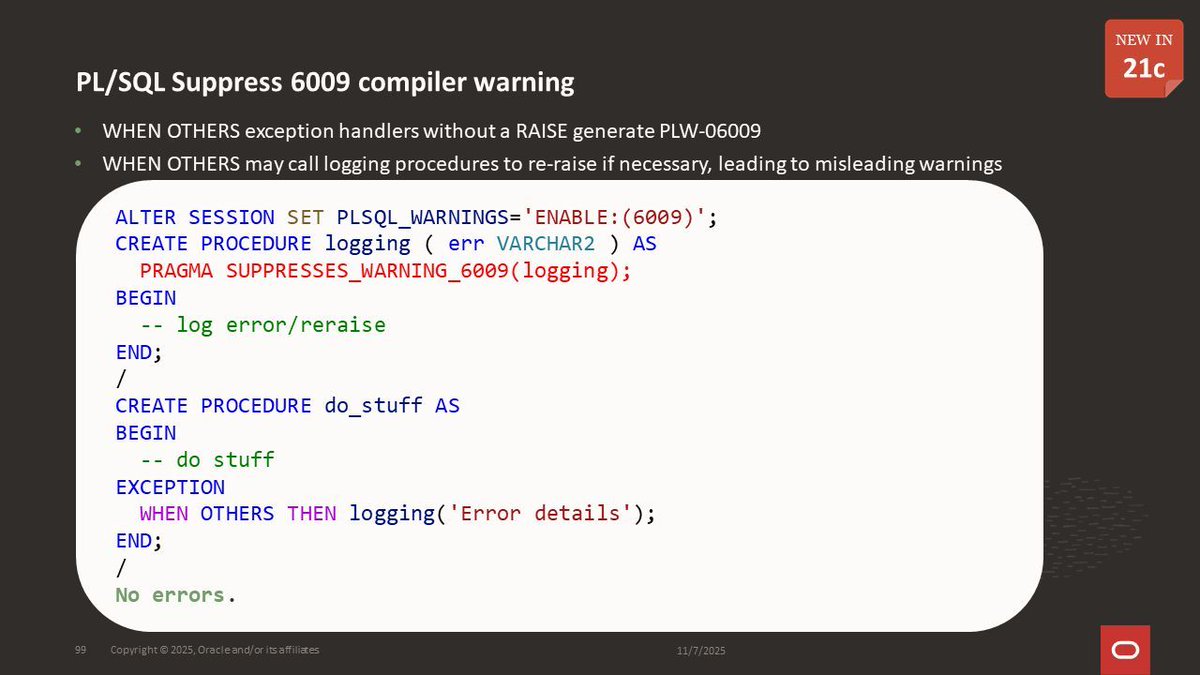
Get free access to Oracle AI Database at freesql.com This browser-based tool enables you to run and share #SQL statements Even better, you can now connect to your schema from clients on your machine using SQL*Net So you can run SQL from your favourite IDE
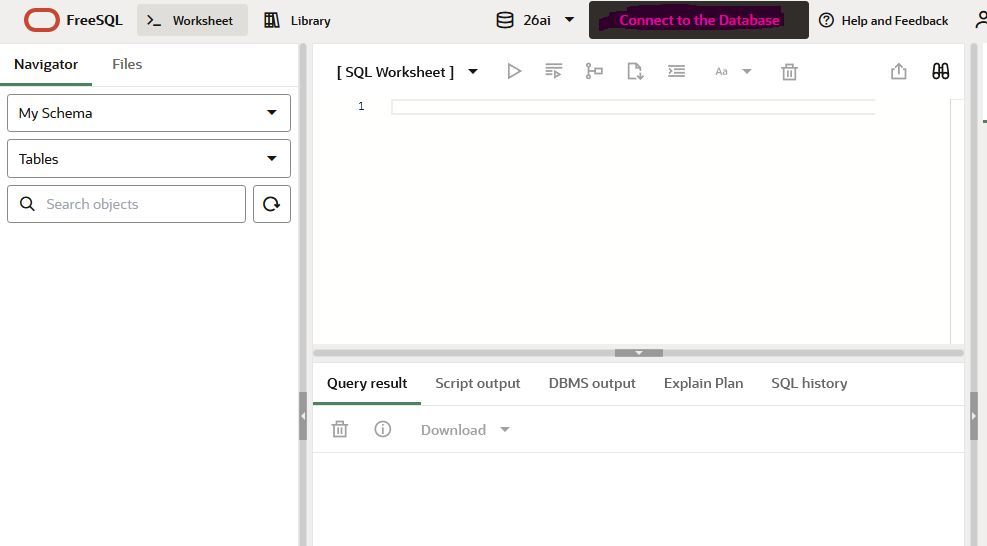
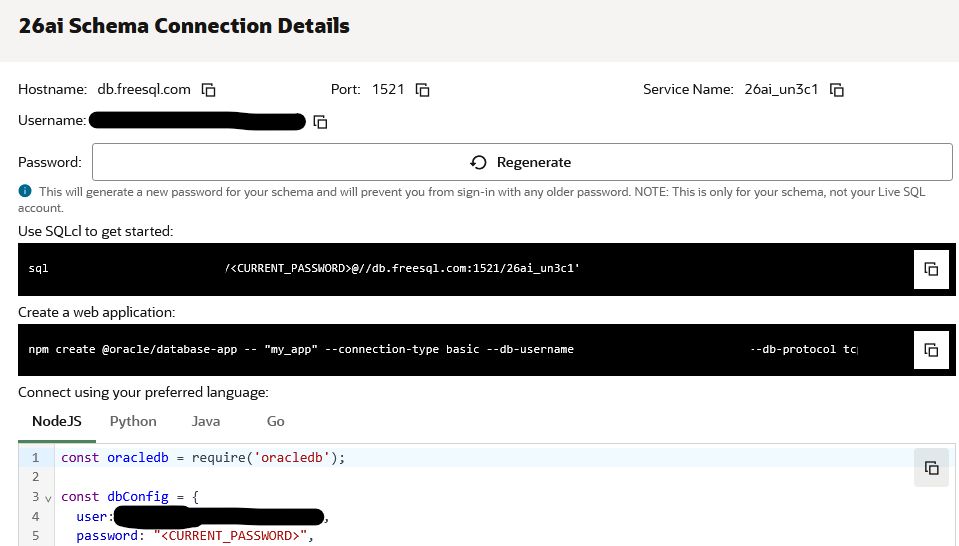
Oracle Virtual Private Database enables you to transparently add WHERE clauses to restrict what users can see See what was added with DBMS_UTILITY.EXPAND_SQL_TEXT But this may expose sensitive values! @connor_mc_d shows how to hide them with contexts connor-mcdonald.com/2025/10/15/sec…
Want to find the fastest-growing tables or LOBs in Oracle AI Database? @viniciusdba has built a script that analyzes AWR data to show The 20 segments with the largest total size increases A breakdown of the increase per month for each Get it at github.com/vinidba/dba_sc…
Poorly written #SQL can lead to slow, hard-to-maintain queries Jordan Goodman covers common anti-patterns you should avoid, including Case expressions instead of tables Functions on indexed columns Overusing DISTINCT to “fix” duplicates datamethods.substack.com/p/sql-anti-pat…
Macros in Oracle #SQL enable you to define expression templates as text At parse time the database merges these with the parent query, replacing parameters with the actual values passed Macros come in two types Scalar - use in SELECT, WHERE, ORDER BY, etc. Table - use in FROM


United States 趨勢
- 1. Bama 25.1K posts
- 2. Ty Simpson 4,308 posts
- 3. Georgia 48.8K posts
- 4. #SECChampionship 3,202 posts
- 5. Texas Tech 29.1K posts
- 6. Messi 275K posts
- 7. Dawgs 10.6K posts
- 8. Miami 193K posts
- 9. #UFC323 13.8K posts
- 10. Ryan Williams 1,568 posts
- 11. Harry Ford 2,178 posts
- 12. DeBoer 2,435 posts
- 13. Kirby 13.2K posts
- 14. Grubb 1,539 posts
- 15. #RollTide 2,398 posts
- 16. Slot 140K posts
- 17. Mariners 4,327 posts
- 18. MLS Cup 89.6K posts
- 19. Ferrer 4,153 posts
- 20. Nate Frazier N/A
你可能會喜歡
-
 Ask TOM for Database/SQL
Ask TOM for Database/SQL
@OracleAskTOM -
 Chris Saxon
Chris Saxon
@ChrisRSaxon -
 Oracle APEX
Oracle APEX
@OracleAPEX -
 Connor on SQL and Database
Connor on SQL and Database
@connor_mc_d -
 Franck Pachot
Franck Pachot
@FranckPachot -
 SQL.ProductManager.Oracle.Databases
SQL.ProductManager.Oracle.Databases
@thatjeffsmith -
 Mike Dietrich
Mike Dietrich
@MikeDietrichDE -
 Oren Nakdimon
Oren Nakdimon
@DBoriented -
 Maria Colgan
Maria Colgan
@SQLMaria -
 Roel 😎
Roel 😎
@RoelH -
 Tanel Poder 🇺🇦
Tanel Poder 🇺🇦
@TanelPoder -
 Modern SQL
Modern SQL
@ModernSQL -
 krisrice 🏒🍺📷
krisrice 🏒🍺📷
@krisrice -
 Tim Hall ∞🐵+∞⌨️
Tim Hall ∞🐵+∞⌨️
@oraclebase -
 Heli Helskyaho
Heli Helskyaho
@HeliFromFinland
Something went wrong.
Something went wrong.

















